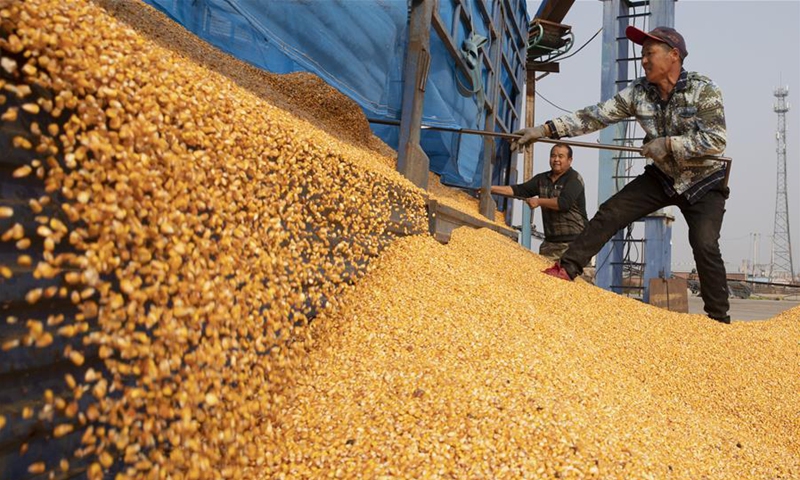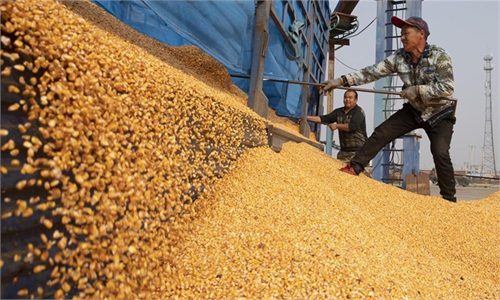
Farmers unload corns in Ning'an City, northeast China's Heilongjiang Province, Oct. 27, 2020. Autumn harvest in Ning'an has mostly finished, while food processing enterprises hum. Photo:Xinhua
China's corn imports in May surged nearly four times compared with last year due to the country's strong feed demand and competitive foreign corn prices compared with domestic prices, signaling record high demand in 2021.
China imported 3.16 million tons of corn last month, an increase of 395.3 percent year-on-year, the General Administration of Customs said on Friday. That sent the country's purchase of corn in the first five months to 11.73 million tons, more than China's total annual purchase of 11.3 million in 2020.
The US Department of Agriculture (USDA) on Wednesday said exporters in May reported a flurry of new crop sales to China. In three transactions in May, China purchased 3.06 million tons of US corn for the 2021-22 marketing year, the USDA said on May 11.
It projected China's corn imports at 26 million tons for 2021-22, a new high.
"China's hog production has recovered, which requires increased demand for hog feed. That has led to tight domestic corn supply and demand, requiring more imports to fill the gap," Jiao Shanwei, editor-in-chief of cngrain.com, a website specializing in grain news, told the Global Times on Friday.
China is encouraging hog producers to use less soybean meal and corn in feed products to lower the country's import dependence on the crops. Large hog producers in China have responded to the call.
For instance, China's major feedstock producer New Hope Liuhe has been using just 10 percent soybean meal in its farm feed products as of the end of April, compared with 13.2 percent in 2019 and 12.5 percent in 2020, the company told the Global Times in a previous interview.
Competitive US corn prices compared with China's domestic prices also sped up the corn trade, though the 25 percent tariffs on Chinese imports still remain, he noted.
"The recovering China-US economic and trade relations have also contributed to China's purchase of US agricultural products, which were included in the phase one trade pact," Jiao said.
Although China-US relations are frayed, bilateral trade remains strong, as the 52.3-percent growth in dollar terms in the first five months was the fastest among all China's major trade partners.
As China and the US have started "normal communication" in the economic and trade fields following frequent talks between Chinese and US senior trade officials in June, some expected bilateral ties to return to a normal communication track.


